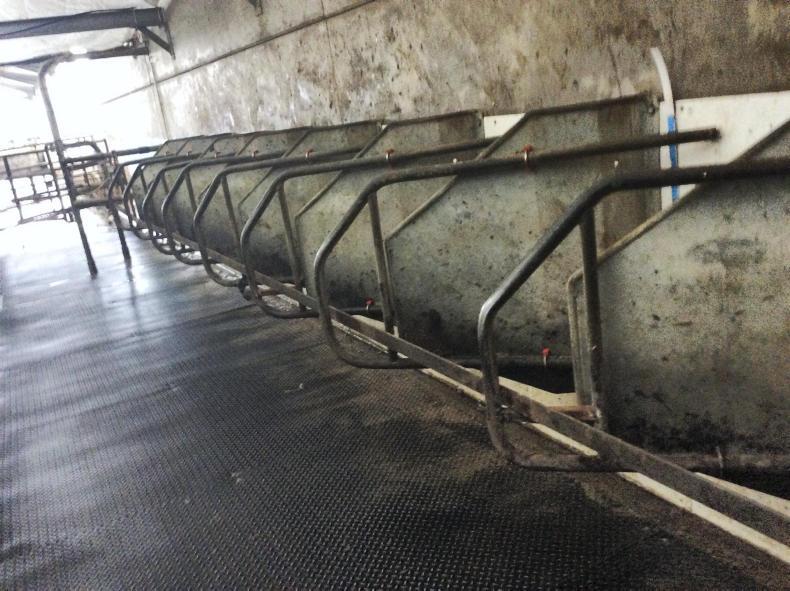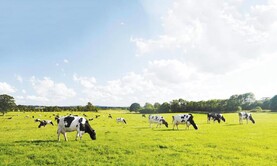The milking herd was finally housed day and night three weeks ago and the milk dropped two litres a cow.
This proved that there was quality in this autumn grass; backed up by the fact that milk ureas were very high at 0.38, before housing.
The winter ration hasn’t yet lifted yields from 21 litres a cow and I am not overly optimistic this will happen, as my farming friends the length of Britain tell me that cows aren’t milking very well this winter.
The current winter ration consists of grass silage self-fed in the clamp under a wire, as well as nine ring feeders for 110 cows, layered with big bale silage, maize silage and brewers’ grains.
The maize silage to grass silage ratio is 50:50; we are contemplating making it 60:40 maize silage: grass silage. Butterfats are currently 4.54%, proteins 3.24% and ureas 0.24.
Overcrowding
Due to overcrowding at housing, many of the fresh calved heifers were lying out on the concrete, so we have created a separate heifer group, loose housed on straw.
The heifers this year are smaller than usual and this is exacerbating the problem, that when we built the parlour, the plans we were given were obviously for full-sized Holsteins.
We have, over the years, been very careful to keep the size of our cattle smaller than average so that they would still fit in the cubicles and have a light footprint enabling an early turnout in the spring, as opposed to the heavier Holsteins.
Therefore, they are not particularly right in the parlour. The back feet of these small heifers are an arm’s length away. We initially tried running a lorry strap at brisket height along the front of the mangers to hold them back, but all they did was step over it.
When due to exit they often caught the lorry strap with the transponder on the front leg and looked in danger of breaking or dislocating their legs.
We have now installed an angle iron bar the length of the parlour in front of the mangers to hold them back, and have also bolted stainless steel plates into the managers to reverse the slope that was originally towards the wall is now towards the front edge of the manger.

This at last seemed to have resolved the problem in 98% of the cases, which is a great relief because originally I thought we would have to take the mangers off the wall and construct another nine-inch wall inside the original wall and bolt the manager back on.
This would have been tremendous hassle and we would have lost the benefit of the plastic wall coverings we had installed at great expense.
Learning
I hate to admit it, but even at my time of life (I have been constantly reminded of my age, by all the newspaper coverage of our triplets), you never stop learning.
As we approach Christmas, we are still farming in a building site which is creating many lame cows due to them having to cross rough hard-core.
We are now experiencing the first frosts of winter and we will soon find out how vulnerable our new parlour is to freezing up.
We built the parlour/collecting yard to be open, light and airy but its disadvantages will soon become apparent.
Farmer Writes: calving triplet calves and the World Dairy Summit
Farmer Writes: the best grazing season of a lifetime in England






 This is a subscriber-only article
This is a subscriber-only article












SHARING OPTIONS: